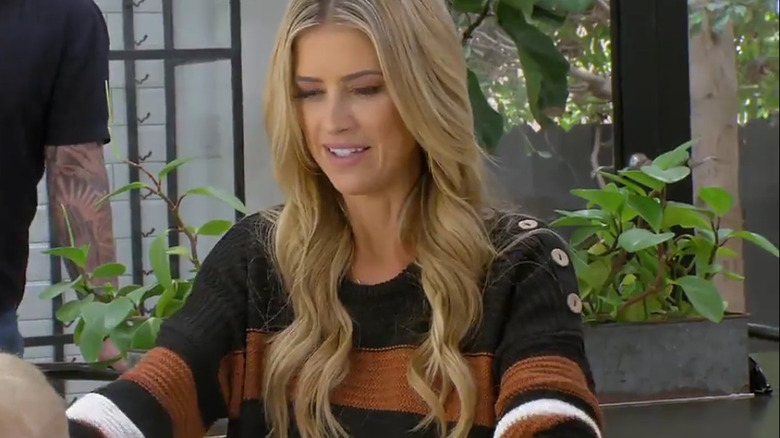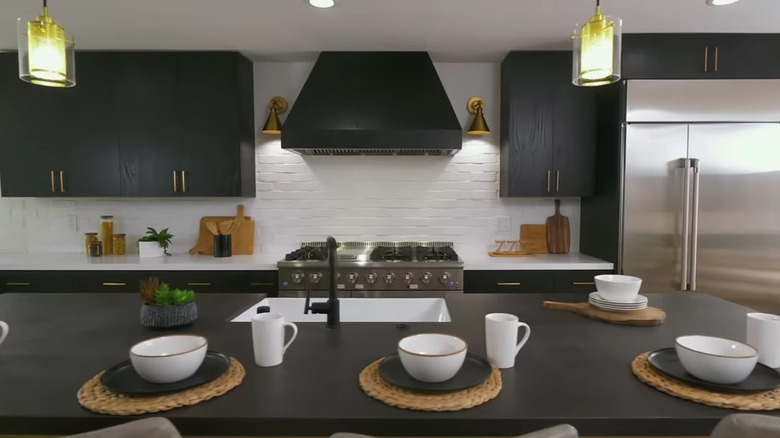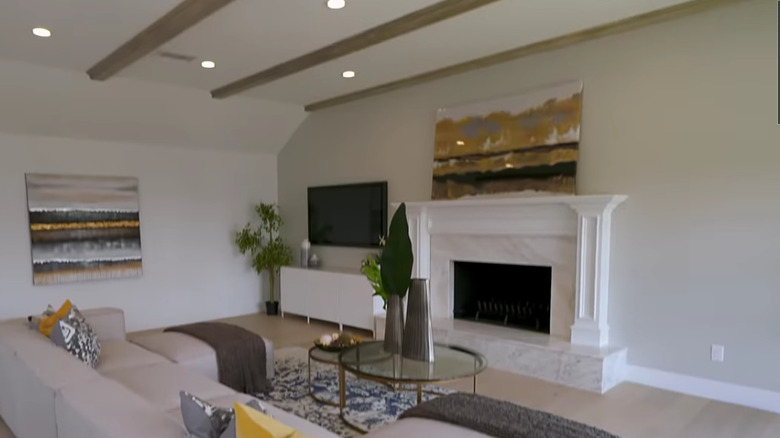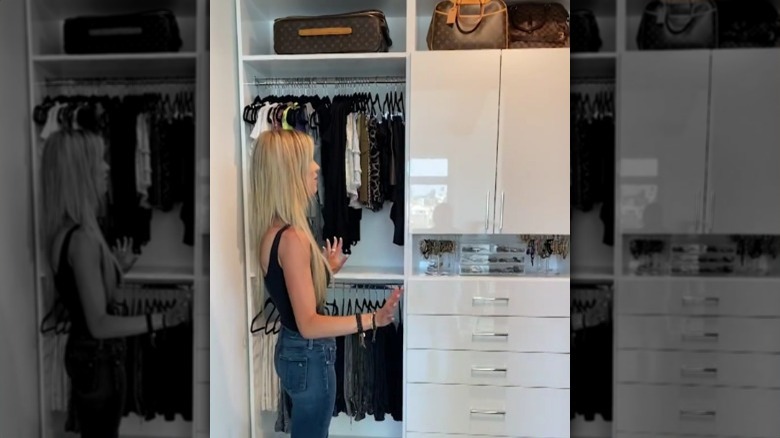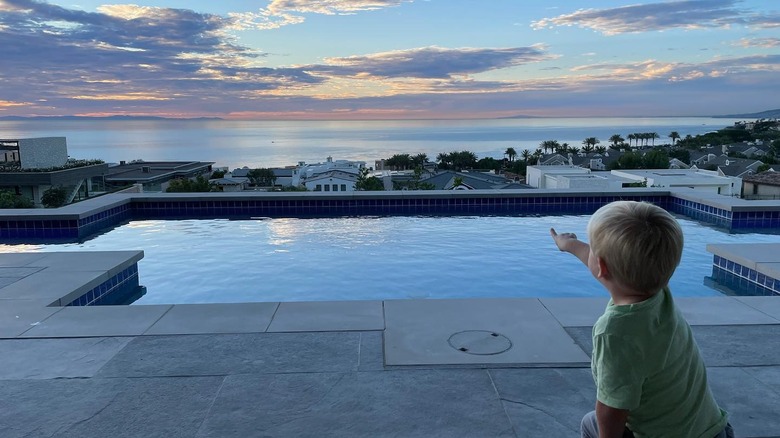Christina Hall's Design Tips You Should Totally Avoid
Christina Hall is a well-known personality on television and in the world of home renovation, design, and house flipping. She and her first husband, Tarek El Moussa, appeared together on "Flip or Flop" for 10 seasons and closed out the show in March 2022. The show featured a variety of unique modernizations and household upgrades that got the creative juices flowing for everyday homeowners.
In 2018, Hall began a spinoff series called "Christina on the Coast," which premiered its fourth season in December 2022. She is known for her energetic and knowledgeable approach to home design, both inside and out. Yet, anyone can make mistakes or build out a vision that simply doesn't come together the way it was imagined in the end. This has doubtlessly happened to homeowners across the country on numerous occasions. And even the professionals like Hall and her team of experts can fall victim to simple miscalculations. Making mistakes is all a part of the growing process and learning from them is essential. These design missteps from Hall's home improvement journey can certainly serve as a basis for growth and better decision-making when designing your next home improvement project.
Foliage is important, but carelessness can be potentially harmful
Adding plant life to your home is a great way to inspire creativity, build a more comforting environment, and promote better wellness. In an episode of "Christina on the Coast," viewers got a glimpse into the awe-inspiring greenery in her home as she conducted a business meeting. However, it's important to note that selecting indoor plants carefully is critical when there are children or family pets in a house. Espoma Organic reports that Boston ferns, spider plants, and Christmas cacti are all great options that won't introduce a toxic element to your home. The last thing you'll want to do when decorating your living space is poison one of your beloved family members unwittingly with a lily, chrysanthemum, or sago palm (via ASPCA Pro).
There's no direct indication that Hall's natural decorations may be poisonous, but taking inspiration from her design choices may bring you and your loved ones directly into the crosshairs. Interior decorators are often attuned to the types of plants that can and can't be included in households with certain members, but the average homeowner may not be. A careless hand here can spell disaster, whereas a little additional research into the best plan selections can avert any crisis.
Colorless exterior facades that don't excite
During her days filming "Flip or Flop," Hall often utilized white, gray, or cream color palettes for the home exteriors she was working on. These color choices can provide a baseline of cleanliness and simplicity, but they don't add any real excitement or character to a property. To make a white wall stand out, it must be paired with a contrasting shade.
Hall has shifted away from using exclusively subdued shades for exteriors, experimenting with more eye-catching colors. She has since painted doors red or yellow, and has tried painting some houses blue. Adding flashes of bright and eye-catching color to the exterior façade of a home can make it far more appealing if you're trying to sell the property, and it adds a layer of energy for homeowners coming back to the property at the end of a long day at the office, too. Regardless of your future plans with a home, making it a bold and inviting space inside and out is critical to enjoying the full range of perks a home offers. Color is a powerful feature that plays right into the human condition; take advantage of it!
Dark interior color palates can dim the atmosphere
In the same way that Hall leaned heavily into white exteriors, she once also put great stock into using dark interior color schemes. Darker wood themes or metal inclusions can be a powerful visual choice inside a home. Still, they have a heavy energy that can be hard to shake when the moment calls for something brighter and livelier.
Realtor reports that Hall has since moved toward a more light interior setup in more recent design choices both while filming "Flip or Flop" and now in her new show "Christina on the Coast." This is a welcome change, and better positions viewers to take advantage of the natural space of their own homes when planning a renovation project. Light tones inside a kitchen, living room, or bedroom can go a long way to create the light and airy mood most people seek for these comforting and relaxing spaces. Dark interiors are brooding and moody; they can play a thematic role in any property but should be used sparingly as accent additions or in niche decorating tasks.
White painted fireplaces are a tired design trend
Hall also once heavily used white paint on brick or wooden fireplaces. In older episodes of "Flip or Flop," Hall consistently opted to paint the fireplace with a white overcoat rather than leaving the natural brick, wood, or stone face as it was. Painted brickwork or wood can add a modern, clean touch to a dated property, but it must be paired with a contrasting color to not fade into the background. That might mean adding black candlestick holders on either side or a colorful piece of art above it.
In more recent episodes of her shows, Hall chose to leave the natural brickwork alone or update it with bold or design-forward stone, tile, or wood. She has leaned into painting some fireplaces black or charcoal for a bold pop of color or using herringbone tilework to add texture and pattern to the space.
On another note, if you choose to paint your bricks, you are changing the nature of the material by covering the exterior layer. Instead, it may be a good idea to use stain to update them temporarily.
Her own home's walk-in closet is luxurious, but may not be ideal for organization
Hall's walk-in closet is the height of luxury, uses bright shelving installations, and has plenty of room to move around. It's a fantastic place to get ready in the morning, but it lacks some key hallmarks of a closet that would tide over the average homeowner — including one that is lucky enough to enjoy their own walk-in.
For one thing, most of her closet shelving is without doors or drawers. This can be great for someone who is meticulously organized and keeps everything in exactly the right spot. But for others who are a bit laxer with their organization, not having the ability to close away the space can make for a cluttered and messy display most of the time. Her space also looks like a mixture of her clothes and some things for her children. This might work for some homeowners, but on the whole, keeping different family members' items in one closet can make organizing them more complicated.
A beautiful pool is a wonderful home addition, but it requires essential safety equipment
In a profile done by Life & Style Magazine, Hall opens up about life and a home in California that she sold in April 2022. She is a proud mother, and her family includes multiple dog companions. These realities shine a spotlight on one design flaw that simply can't be overlooked by others who share their home with either two-legged or four-legged loved ones. This home's pool offered a stunning Pacific Ocean vista, and its deck was made with large stone paver tiles. It also has classic deep blue finishing tiles that run beneath the water line to create a shimmering and inviting space in which anyone would happily spend hours splashing around. But this is where the problem lies!
Because the pool is so beautiful, it can be tempting for young children or small pets to meander in unaccompanied. This pool doesn't incorporate the essential safety fencing to stop them from entering. The U.S. Consumer Product Safety Commission notes that an effective barrier should prevent a child from climbing under, over, or even through it. To do this, the Commission suggests a height of at least 4 feet and minimal gaps between rungs and the ground and bottom of the barrier.

